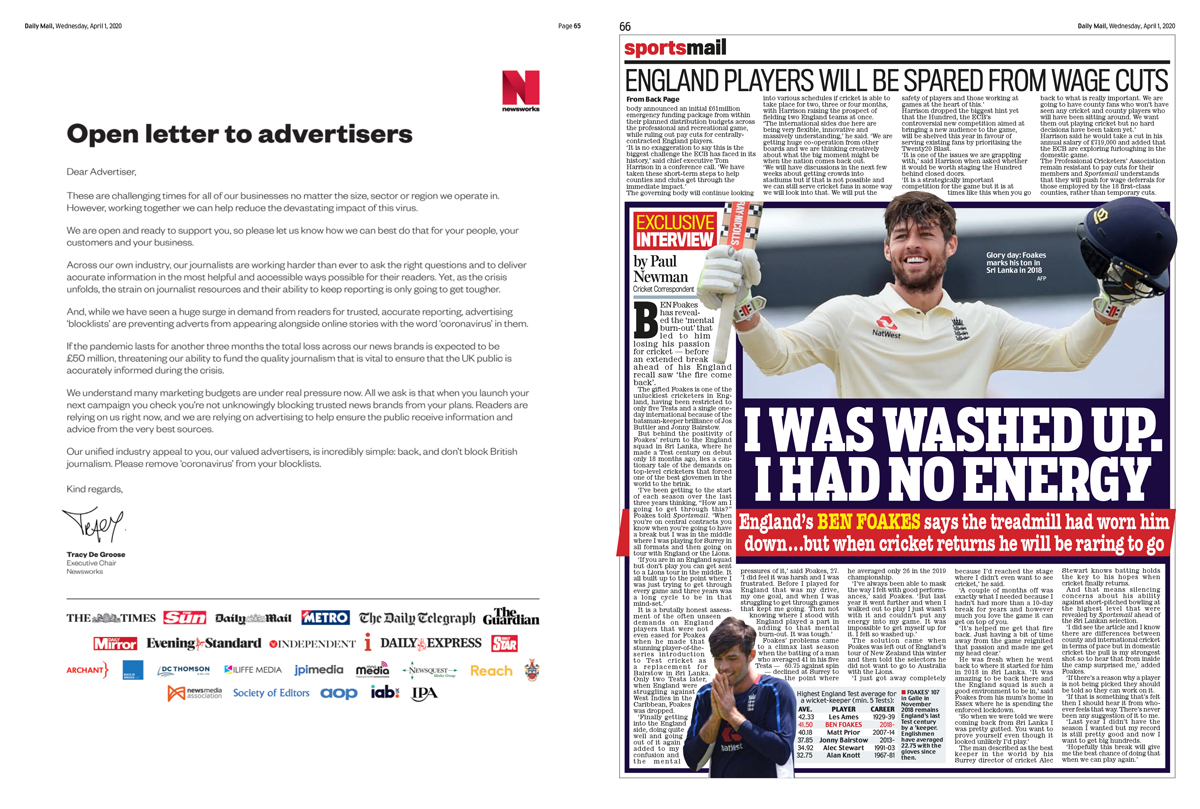Publishers hope to emerge from the crisis by fortifying brand and user relationships – even if that means accepting short-term pain, writes Alex Brownsell.
Marketing in the COVID-19 crisis
This article is part of a special WARC Snapshot focused on enabling brand marketers to re-strategise amid the unprecedented disruption caused by the novel coronavirus outbreak.
At precisely the moment that commercial media outlets experienced an unprecedented surge in audiences, the global advertising market spiralled into freefall. It is a bitter irony.
Speaking on a World Media Group webinar earlier this week, Emma Winchurch-Beale, International Sales Director at The Washington Post, revealed the company had seen a 140% leap in traffic during March, with 20,000 readers signing up each day to receive its special COVID-19 newsletter.
Similarly, site visits to premium UK newsbrands are up between 30% and 60%, explained Denise Turner, Insights Director at trade body Newsworks, speaking on the same webinar. Newsworks members include Guardian News & Media, News UK, Telegraph Media Group and Reach.
According to Turner, some print titles have even experienced an increase in demand for the delivery of physical products – further evidence that coronavirus confinement is boosting both offline and online media consumption. Readers are “actively engaging” with news media as a result of the crisis, she added, rather than passively scrolling through headlines.
Audiences up, but revenues down
Yet this demand for content has coincided with a demoralising downturn in ad revenues, as brands bring their 2020 advertising plans to a screeching halt.
The chastening estimates released by the Internet Advertising Bureau last month reveal the scale of recession to come: US marketers intend to spend 39% less on traditional media than they had originally planned from March to June 2020, while digital investment is set to fall by one-third (33%).

Publishers of all shapes, sizes and models are suffering, with management and journalists alike expected to accept reduced salaries to help businesses to cope with the sharp decline in revenues. Newsworks has warned newsbrands stand to lose £50m if the pandemic lasts another three months, particularly if advertisers continue to blacklist terms such as “coronavirus” when buying online ad campaigns (see its open letter to advertisers below).

The difficulties facing certain channels are well documented and largely unavoidable. One cannot reasonably expect advertisers to maintain investment in media while audiences are either severely diminished (OOH) or entirely absent (cinema).
In comparison, print and digital content publishers must appraise how best to engage with reluctant advertisers and resurgent audiences, which expect them to continue to deliver a public service during the COVID-19 outbreak in spite of the many headwinds combining to hinder their progress.
Paywalls are crumbling
The crisis also threatens to unpick the sector’s ongoing pivot towards reader revenues, a rare publishing business success story in recent years.
Inspired by The New York Times’ strategy to grow digital subscriptions, media owners from The Guardian to The San Francisco Chronicle have boosted revenues earned directly from readers, rather than advertisers. Start-up content brands including The Athletic and Tortoise have eschewed advertising altogether in favour of an ad-free subscription operating model.
Yet, moved by a desire to be seen as a “trusted guide” through this uncertain period, most major publishers have taken down paywalls and are allowing non-registered users to access their most-visited COVID-19-related content.
Damian Douglas, Time’s Managing Director, EMEA, told the World Media Group webinar he had instigated a shift in commercial modelling to respond to the “moral obligation” on publishers to widely share information and advice on the outbreak. Johanna Mayer-Jones, SVP of Partnerships at The Atlantic, agreed, insisted that media owners have a “duty” to the public during the crisis.
Making friends and influencing clients
Some publishers have come up with novel ways to encourage brands to continue buying media. In the case of the Wall Street Journal, it has pledged that if an ad fails to achieve a 70% recall rate – as measured by the third-party firm Research and Analysis of Media - those advertisers will be offered the same-size ad placement for free within a fortnight of the original booking.
Other media owners are coalescing around the idea that now is a moment to help advertisers and readers to come through the outbreak – and that the rewards will follow whenever society is able to re-emerge from its COVID-19-enforced chrysalis.
Alongside a “significant spike” in traffic, Mayer-Jones said The Atlantic has spotted a noticeable change in its audience demographic. It hopes to hold on to some of those additional readers in the months and years to come, and ultimately benefit in the form of paid subscriptions and higher yields on ad inventory.
When asked if the Post has found it difficult to sell ads during the crisis, Winchurch-Beale insisted it is more important to be “empathetic” to marketers’ needs. Her team is offering “masterclasses” for advertisers on essential topics, such as how to mitigate the demise of the third-party cookie. “We need to ensure we’re connecting with clients, not necessarily selling to them,” she said.
“People have long-term memories,” concluded Douglas. Publishers will benefit in the longer-term from putting their values “front and centre”, rather than chasing short-term financial relief, he added.
Given the deepening gloom engulfing the advertising market, it appears media owners have little alternative but to hope that Douglas, Mayer-Jones and Winchurch-Beale’s ‘no-pain-no-gain’ philosophy is vindicated.

